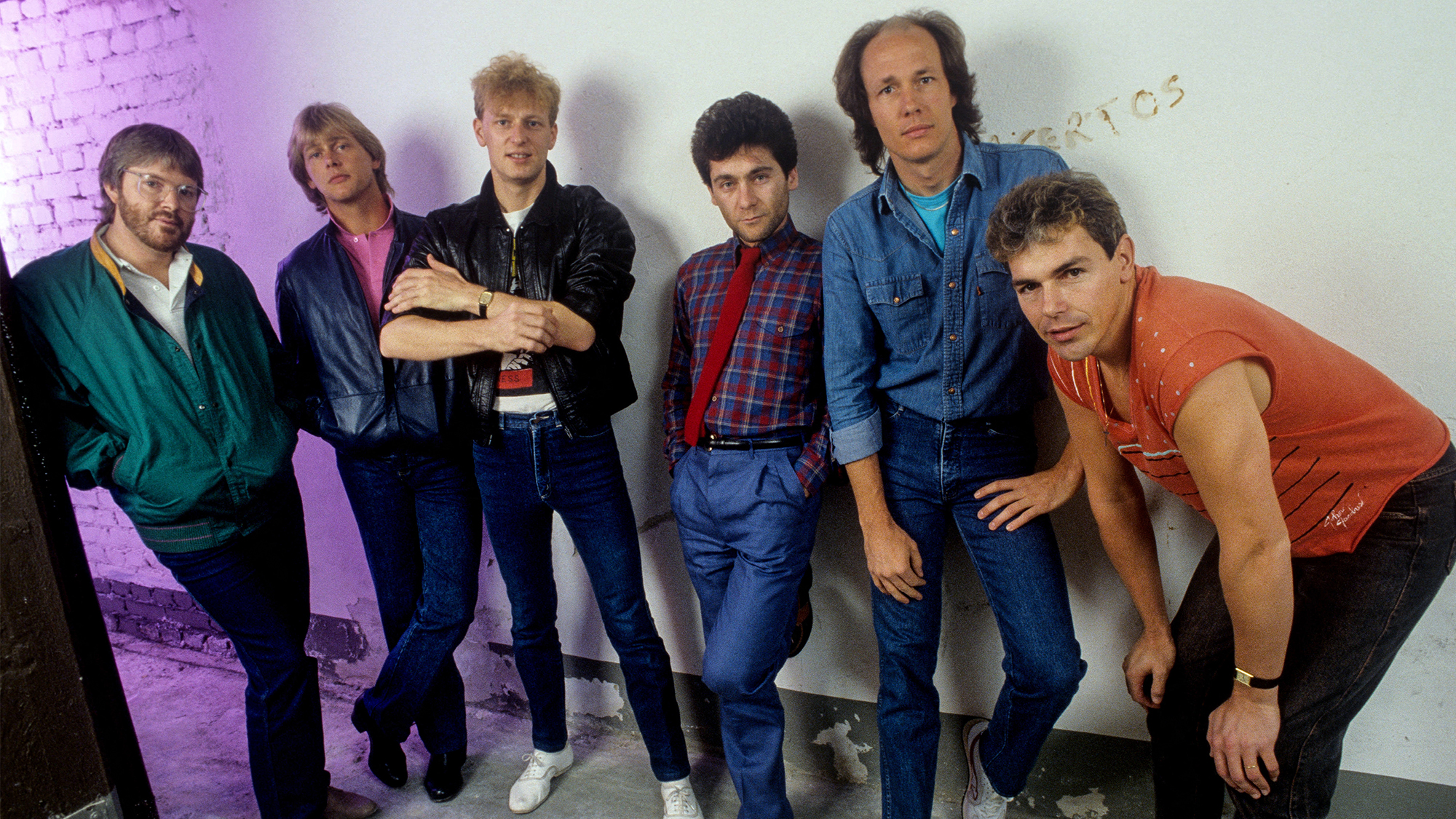Learn 18 Country-Shred Licks With Double-Stops, Pedal-Steel Bends and Other Tricks of the Trade
Add some flash and sass to your playing with these electrifying licks.
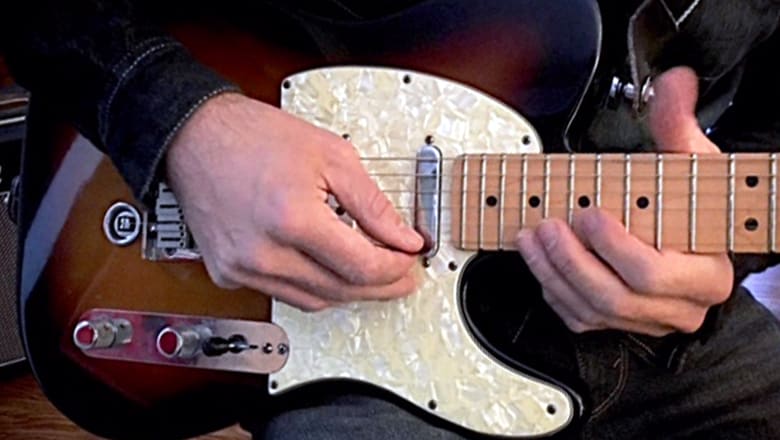
In this lesson, we'll provide you with some hot techniques that'll add flash and sass to your playing.
You’ll learn how to play and use double-stops, pedal-steel bends, open-string licks and banjo rolls. And along the way you’ll pick up 18 wild licks that you can use to spice up your guitar work, whether you play country or rock.
So grab your guitar, and let’s get down to work!
Double-Stops and Pedal-Steel Bends
Let’s start out with some flashy double-stop patterns. The first one [FIGURE 1] involves a pair of dyads on the B and G strings, articulated with the middle and ring fingers. Interspersed with single notes, the figure outlines the tones of an E7 chord (E-G#-B-D).
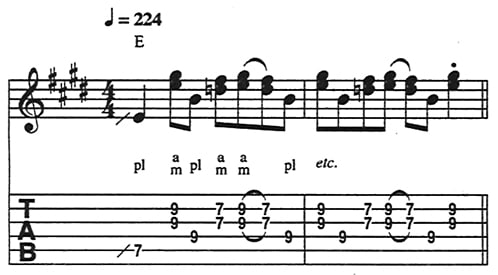
Next, we have a chicken-pickin’ example [FIGURE 2]. Harmonized from G Mixolydian (G-A-B-C-D-E-F) on strings 1–2 and 2–3, the double-stops here are answered with ghost-string-muted attacks on the 3rd and 4th strings.
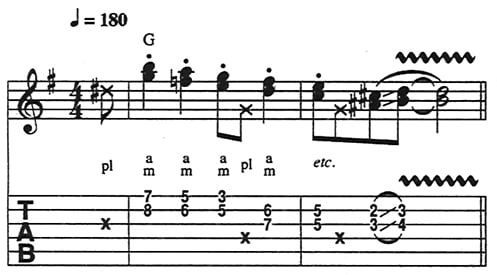
FIGURES 3A–B use 6ths harmonized from the D Mixolydian mode (D E-F#-G-A-B-C) and the C major scale (CD-E-F-G-A-B), respectively. Take your time with these, and closely follow the hybrid-picking instructions written below the staff.
FIGURE 3A
All the latest guitar news, interviews, lessons, reviews, deals and more, direct to your inbox!

FIGURE 3B
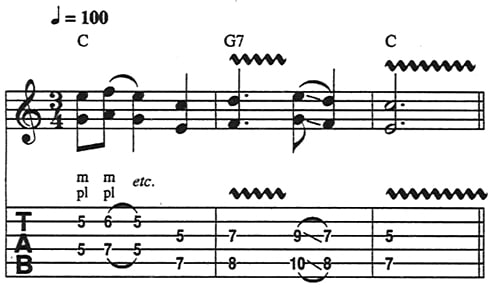
Country pickers love to emulate the sweet, soulful strains of the pedal-steel guitar. Doing so requires strong fingers, as well as a good ear for holding notes to pitch. FIGURES 4A–D present some typical pedal-steel bends. In each figure, make sure you hold the fixed string stationary while you bend the other to pitch. One could argue that this technique requires more mind control than it does finger strength.
FIGURE 4A–D
FIGURE 5 offers a real-world example of pedal-steel bends over a I-bVII-IV ballad in the key of E.

FIGURE 6 features a typical ending lick for a country ballad in the key of C. By far the most ambitious move in today’s installment, this one requires you to keep the strings parallel while you bend them to pitch.

Open-String Licks
One of the unwritten commandments in country is “Thou shalt play open strings wherever possible.” This refers not only to chords but also to riffs, licks and fills as well.
FIGURE 7 is a sparkly open-string riff in which half-step bends from C# to D are answered by open-4th-string attacks. This figure works well as an intro or a fill, but try it on other strings as well (G# bent to A on the 6th string, say, followed by the open 5th string).
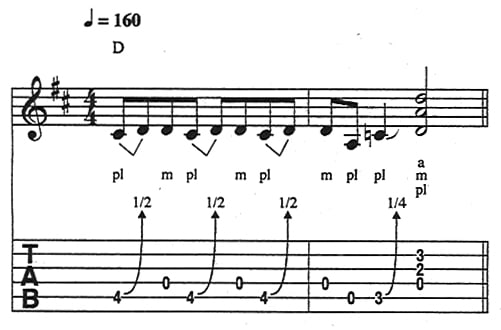
The lick in FIGURE 8 is a good capper for a solo; it features double pull-offs to open strings, plus a pair of half-step fretted-note/open-string “rubs.”

FIGURES 9A–C contain examples of open string cascading. Most commonly associated with Chet Atkins, this technique mixes fretted notes with sustained open strings for a shimmering, harp-like sound. FIGURE 9A descends the G Mixolydian mode (G-A-B-G-D-E-F), substituting open strings for fretted notes wherever possible.
A minor 3rd-major3rd move ends the lick, resulting in a ringing G6 chord. Follow the hybrid-picking instructions and fingering suggestions carefully, and arch your fret-hand fingers so that they come down perpendicular to the fretboard.
FIGURE 9B is similar to FIGURE 9A but is based on the A Mixolydian mode (A-B-C#-D-E-F#-G). FIGURE 9C is the most difficult of the three. Climbing D Mixolydian (D-E-F#-G-A-B-C), it culminates in a shimmering D13 voicing. Proper fret-hand fingering is absolutely crucial to pull this one off.
Banjo Rolls
Banjo rolls are an essential hot-country technique. The maneuver is inspired by the picking patterns and open-string work employed by banjo players (think the Beverly Hillbillies theme song). Influenced by the great banjoist Earl Scruggs, FIGURE 10 is a three-string adjacent roll - which, in fact, most rolls are - outlining a G chord. You’ll hear Albert Lee playing a similar figure in his barn-burning “Country Boy’’ solo. Use the hybrid-picking directions and let all the notes ring together.
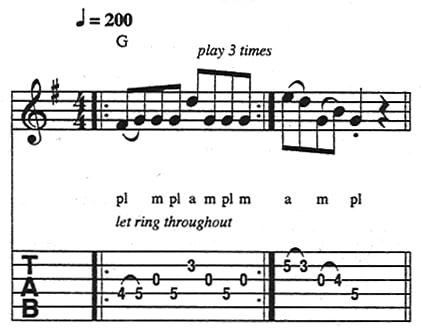
FIGURE 11 is another three-string roll, this time on the top three strings. A trio of triple stops sets off the roll, and the figure culminates in a hybrid-picked sweep down the top four strings.
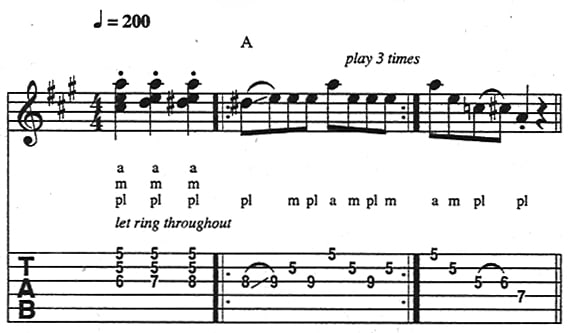
The long example in FIGURE 12 consists of a repeating four-string roll. Concentrate on the first measure until you can nail the picking pattern - which, as you’ll notice, stays constant throughout the example. Slight fret-hand variations from measure to measure line up with the chord tones of the changes, which spell out a I-V-I-IV progression in the key of A.
Guitar Player is the world’s most comprehensive, trusted and insightful guitar publication for passionate guitarists and active musicians of all ages. Guitar Player magazine is published 13 times a year in print and digital formats. The magazine was established in 1967 and is the world's oldest guitar magazine. When "Guitar Player Staff" is credited as the author, it's usually because more than one author on the team has created the story.



